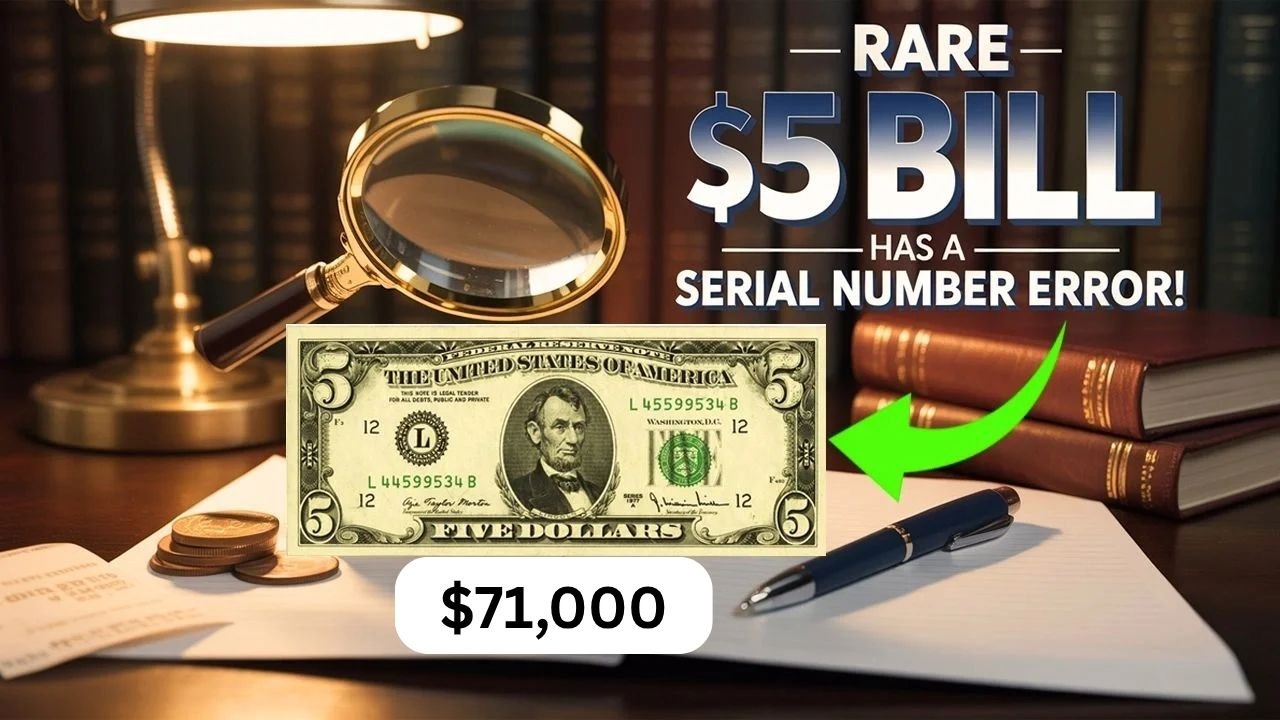Rare Find Sparks Excitement
A $5 bill with a rare printing error recently sold for a staggering $71,000 at an auction, catching the attention of collectors and everyday people alike. The bill, a 1969 series Federal Reserve Note, had mismatched serial numbers, a mistake where the numbers on the left and right sides of the bill don’t match. This error, known as a mismatched serial number, is extremely rare and highly sought after by currency collectors. The discovery has sparked a wave of interest, with many now checking their wallets for similar treasures. Experts say such errors are like finding a needle in a haystack, but they do happen, making every dollar bill a potential jackpot.
What Makes It So Valuable?
Mismatched serial numbers occur when the printing process at the U.S. Bureau of Engraving and Printing goes slightly off. Each bill has two serial numbers, one on the top right and one on the bottom left. These numbers should be identical, but a glitch can cause them to differ, sometimes by just one digit. In the case of the $5 bill sold for $71,000, the serial numbers were off by a single digit, making it a prime example of this error. Collectors value these bills because they are unique and represent a tiny mistake in an otherwise precise process. The rarity, combined with the bill’s condition, drives up its value significantly.
Auction Details and Buyer Interest
The $5 bill was auctioned by Heritage Auctions, a well-known auction house specializing in rare currency. Bidding started modestly but quickly escalated as collectors recognized the bill’s uniqueness. The winning bidder, an anonymous collector, paid $71,000, far exceeding the bill’s face value. According to auction records, similar mismatched serial number bills have sold for anywhere from $20,000 to $100,000, depending on the extent of the mismatch and the bill’s condition. The recent sale has prompted collectors to scour their collections, hoping to find another gem.
How to Spot a Mismatched Serial Number
Checking for a mismatched serial number is simple but requires a keen eye. Look at the two serial numbers on your bill, usually printed in green ink. If the numbers don’t match exactly, you might have a rare find. Here’s a quick guide to help you check:
| Step | Action |
|---|---|
| 1 | Find the serial number on the top right of the bill. |
| 2 | Compare it to the serial number on the bottom left. |
| 3 | Look for any differences, even a single digit. |
| 4 | Verify the bill’s authenticity with a professional if you suspect an error. |
If you find a mismatch, contact a currency dealer or auction house for an appraisal. Condition matters, so keep the bill safe and avoid folding or damaging it.
Could You Have a Hidden Treasure?
The sale of this $5 bill has people across the country digging through their cash. While the chances of finding a mismatched serial number are slim, it’s not impossible. The U.S. prints billions of bills each year, and errors slip through occasionally. Collectors advise checking bills from the 1960s and 1970s, as older errors tend to be more valuable. Even newer bills can have mistakes, though, so it’s worth a look.
Where to Go for Help
If you think you’ve found a rare bill, don’t rush to spend it. Reach out to a reputable currency dealer or auction house for an evaluation. Organizations like the Professional Currency Dealers Association can connect you with experts. You can also check online resources for more information on error notes. Here’s a quick reference for next steps:
| Action | Resource |
|---|---|
| Appraisal | Contact Heritage Auctions or Stack’s Bowers |
| Authentication | Visit a local currency dealer |
| Research | Check the Professional Currency Dealers Association website |
Your $5 bill could be worth thousands, so take a moment to inspect your cash today.
